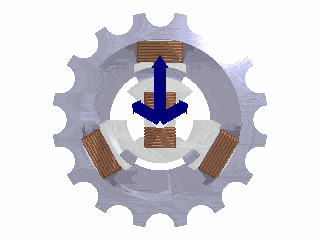|
Electric Wiring
Electrical wiring is an electrical installation of cabling and associated devices such as switches, distribution boards, sockets, and light fittings in a structure. Wiring is subject to safety standards for design and installation. Allowable wire and cable types and sizes are specified according to the circuit operating voltage and electric current capability, with further restrictions on the environmental conditions, such as ambient temperature range, moisture levels, and exposure to sunlight and chemicals. Associated circuit protection, control, and distribution devices within a building's wiring system are subject to voltage, current, and functional specifications. Wiring safety codes vary by locality, country, or region. The International Electrotechnical Commission (IEC) is attempting to harmonise wiring standards among member countries, but significant variations in design and installation requirements still exist. Wiring codes of practice and regulations Wiring ins ... [...More Info...] [...Related Items...] OR: [Wikipedia] [Google] [Baidu] |
National Electrical Code (US)
The National Electrical Code (NEC), or NFPA 70, is a regionally adoptable standard for the safe installation of electrical wiring and equipment in the United States. It is part of the National Fire Code series published by the National Fire Protection Association (NFPA), a private trade association. Despite the use of the term "national", it is not a federal law. It is typically adopted by states and municipalities in an effort to standardize their enforcement of safe electrical practices. In some cases, the NEC is amended, altered and may even be rejected in lieu of regional regulations as voted on by local governing bodies. The "authority having jurisdiction" inspects for compliance with these standards. The NEC should not be confused with the National Electrical Safety Code (NESC) published by the Institute of Electrical and Electronics Engineers (IEEE). The NESC is used for electric power and communication utility systems including overhead lines, underground lines and powe ... [...More Info...] [...Related Items...] OR: [Wikipedia] [Google] [Baidu] |
High-leg Delta
High-leg delta (also known as wild-leg, stinger leg, bastard leg, high-leg, orange-leg, red-leg, dog-leg delta) is a type of electrical service connection for three-phase electric power installations. It is used when both single and three-phase power is desired to be supplied from a three phase transformer (or transformer bank). The three-phase power is connected in the delta configuration, and the center point of one phase is grounded. This creates both a split-phase single phase supply (L1 or L2 to neutral on diagram at right) and three-phase (L1-L2-L3 at right). It is called "orange leg" because the L3 wire is often required to be color-coded orange. By convention, the high leg is usually set in the center (B phase) lug in the involved panel, regardless of the L1-L2-L3 designation at the transformer. Supply High-leg delta service is supplied in one of two ways. One is by a 3-phase transformer (or three single-phase transformers), having four wires coming out of the secondary ... [...More Info...] [...Related Items...] OR: [Wikipedia] [Google] [Baidu] |
National Electrical Code
The National Electrical Code (NEC), or NFPA 70, is a regionally adoptable standard for the safe installation of electrical wiring and equipment in the United States. It is part of the National Fire Code series published by the National Fire Protection Association (NFPA), a private trade association. Despite the use of the term "national", it is not a Law of the United States, federal law. It is typically adopted by U.S. state, states and municipalities in an effort to standardize their enforcement of safe electrical practices. In some cases, the NEC is amended, altered and may even be rejected in lieu of regional regulations as voted on by local governing bodies. The "authority having jurisdiction" inspects for compliance with these standards. The NEC should not be confused with the National Electrical Safety Code (NESC) published by the Institute of Electrical and Electronics Engineers (IEEE). The NESC is used for electric power and communication utility systems including overh ... [...More Info...] [...Related Items...] OR: [Wikipedia] [Google] [Baidu] |
Phase (electricity)
A polyphase system is a means of distributing alternating-current (AC) electrical power where the power transfer is constant during each electrical cycle. AC phase refers to the phase offset value (in degrees) between AC in multiple conducting wires; ''phases'' may also refer to the corresponding terminals and conductors, as in color codes. Polyphase systems have three or more energized electrical conductors carrying alternating currents with a defined phase between the voltage waves in each conductor; for three-phase voltage, the phase angle is 120° or 2π/3 radians (although early systems used 4 wire two-phase). Polyphase systems are particularly useful for transmitting power to electric motors which rely on alternating current to rotate. The most common example is the three-phase power system used for industrial applications and for power transmission. Compared to a single-phase, two-wire system, a three-phase three-wire system transmits three times as much power for the ... [...More Info...] [...Related Items...] OR: [Wikipedia] [Google] [Baidu] |

